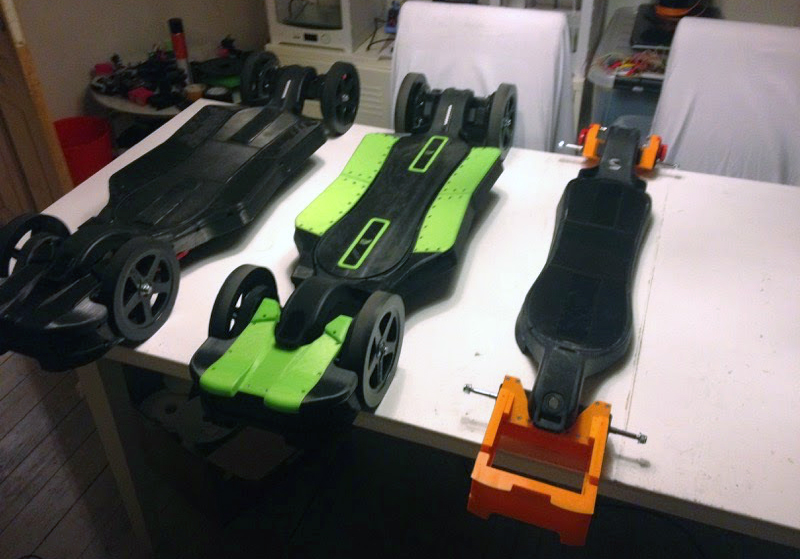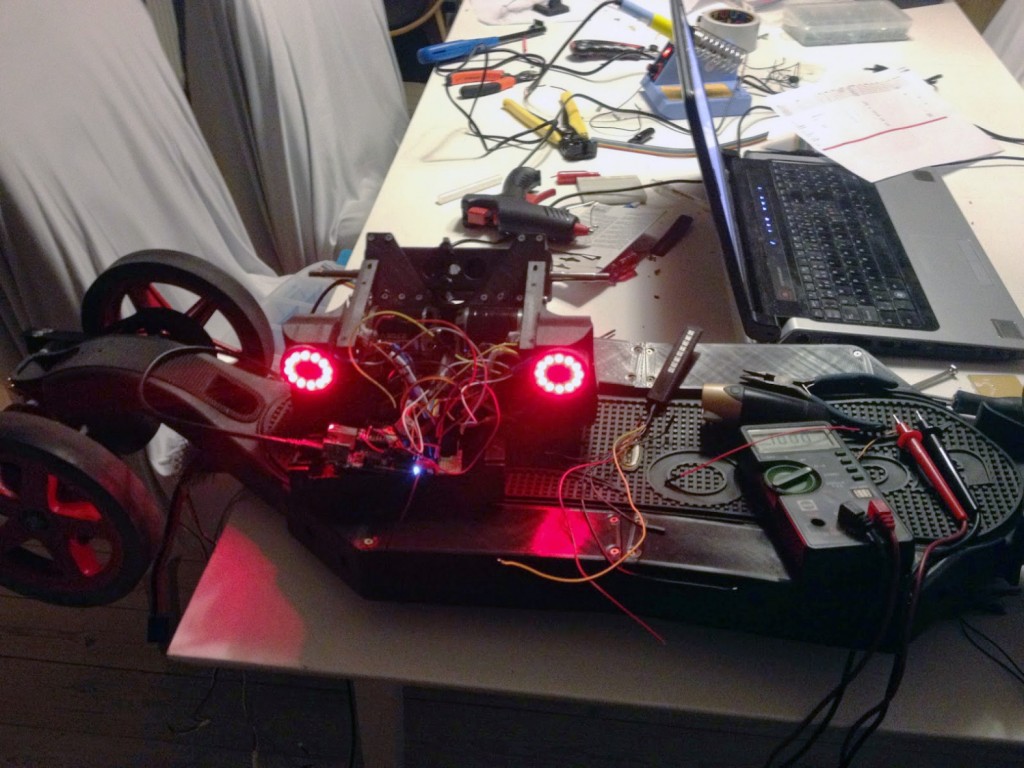Maker Faire attendees will be inundated with awesome tech this weekend, but Autodesk’s booth will likely be a hard one to miss. And featured at the software-turned-hardware maker’s booth, alongside their Ember 3D printer, will be an exciting new invention from Faraday Motion, a group of researchers from Denmark, Poland, Sweden, and the US. Faraday hopes to bring new transportation technologies to mobility impacted people and the result of their work is a 3D printed electric skateboard that is controlled via smartphone.
After two prototypes and fifteen major revisions, the open source PEV (personal electric vehicle) skateboard is described by Faraday as “the most advanced electric skateboard”. While balance and steering is all up to the rider, speed and acceleration are controlled by a smartphone app using the phone’s accelerometer, allowing riders to reach a top speed of 25 km/h and even apply cruise control with the touch of a button. You can see all of the features of the device in the video below:
In an interview with district, Faraday Motion’s Sune Pedersen explains where the project came from, “On top of my of my own mobility problems, my father has Chronic Obstructive Pulmonary Disease (COLD) which impacts his freedom and mobility to a great extent. My cousin of age 32 is paralyzed from the hips and down after two cancer operations.” He continues, “So, in 2013 I thought that with the available technology there would be an opportunity to create a complete new range of cool looking vehicles for urban transport for mobility impacted people as my family, myselves as well as everyone else. I found a Onda Core longboard from Onda Motion based in California and decided it would be a good foundation to experiment with. It had 4 big wheels, was made out of hard composite plastics and it did not look like an ordinary skateboard. With basically no experience in 3D design I bought a 3d printer and some components and started designing the first parts using Tinkercad and generators from Thingiverse I was ready for building the first prototype.”
Being electric, the PEV may be easier to ride than a traditional skateboard, but Pedersen says, “I do not think that an electric skateboard is the perfect way of transportation for everyone.” It may not be for everyone to ride, but it is available for anyone to build. The complete design files can be found on Autodesk 123D and, in fact, the entire board was designed using Autodesk products, including 123D Design for the printed parts and 123d.circuits.io for the electronics. And, though the board’s latest deck is water jetted in Denmark, all of the structural elements of the PEV are 3D printed. Most of the parts are printed in PLA on Pedersen’s Ultimaker 2, while the motor mounts are commercially printed in alumide for higher temperature resistance, and a bracket for the disc brakes are 3D printed in metal.
This isn’t the only PEV the group plans to invent. With low-cost electronics and 3D printing, Pedersen tells district, “The technology we are using; compact batteries, high power motors and advanced computers with intelligent software interacting with a range of sensors and user inputs, can be applied to a range of totally different personal transportation devices not yet seen before. 3d printing combined with our technology will make it easy to quickly invent totally new vehicle types, you could i.e. use our technology to make grandmothers walker electric or even design something innovative from scratch that would look way cooler than anything out there.”
Faraday Motion’s PEV skateboard will be rolling down the aisles of Maker Faire this weekend, alongside countless other 3D printed projects. If you happen to attend, take plenty of video and photos and send it our way!





